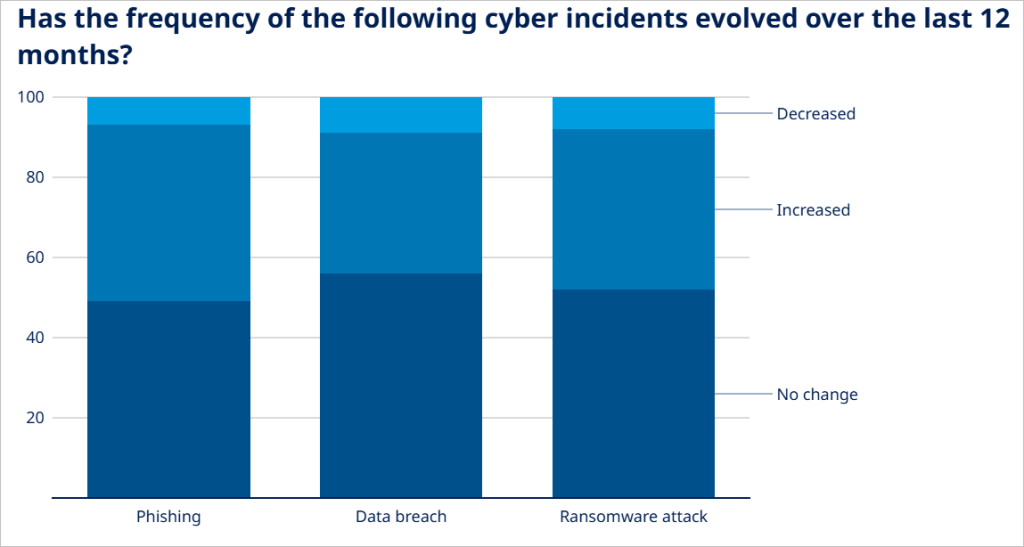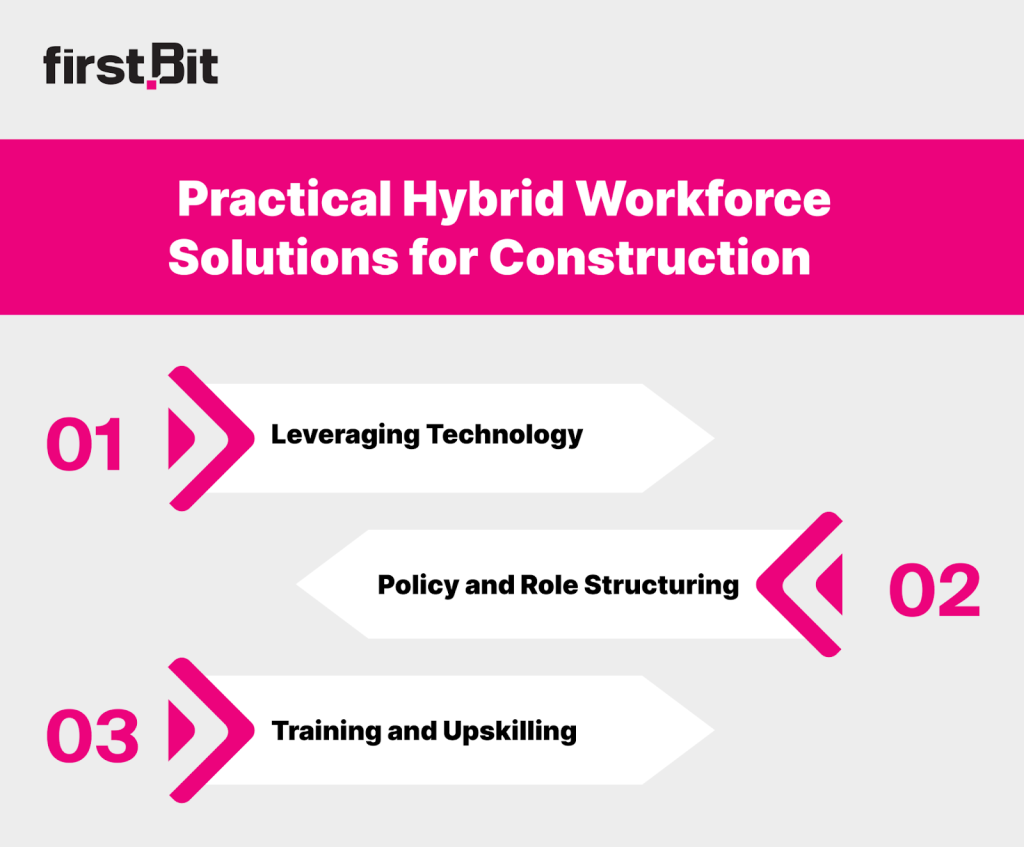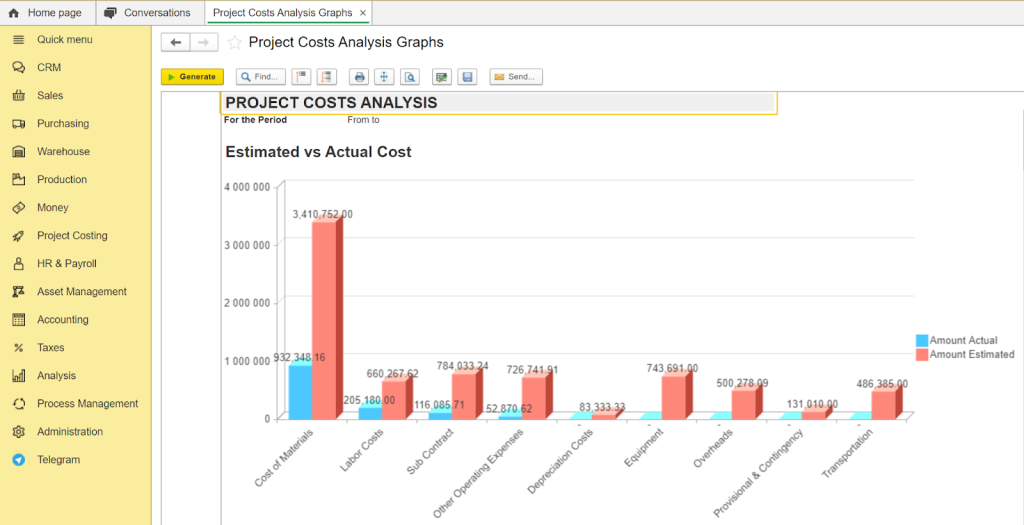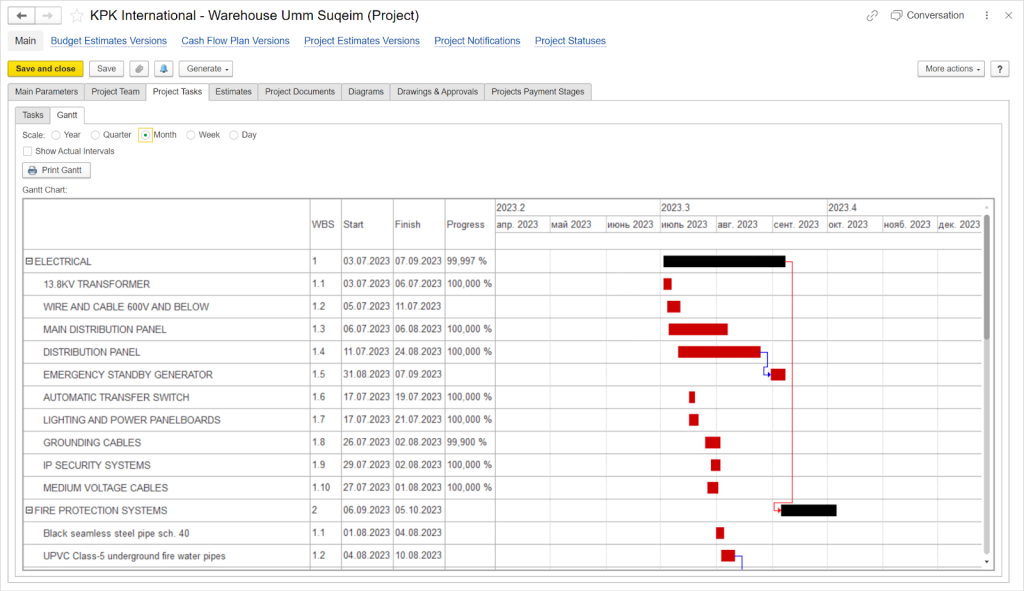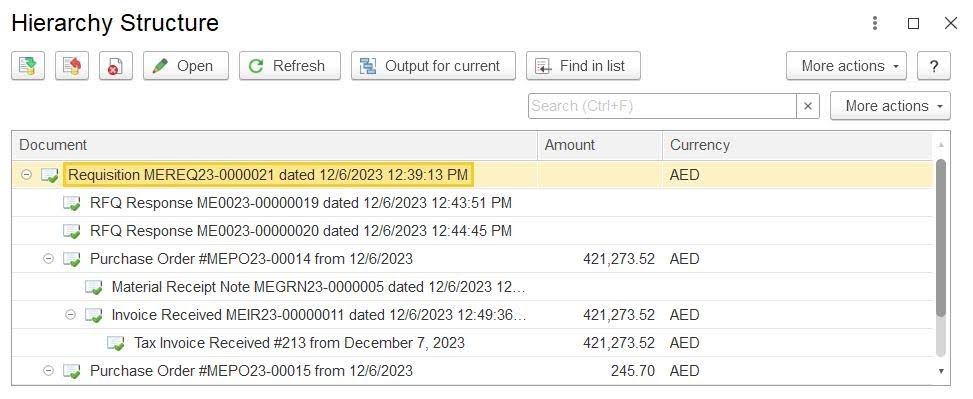Hybrid workforce management was once unthinkable in construction, where progress seemed to depend entirely on physical presence at the jobsite. That perception shifted almost overnight during the pandemic, when firms were forced to rely on digital tools and remote collaboration to keep projects moving.
The shift has left a permanent mark. Surveys show that 92% of construction companies now plan to continue supporting hybrid work, recognizing that what began as a short-term necessity has unlocked long-term advantages.[?]
With costs rising, deadlines tightening, and talent becoming increasingly difficult to secure, effective hybrid workforce management is proving essential for maintaining momentum while enhancing transparency, collaboration, and efficiency. This article explores what hybrid work really means for construction, the challenges it creates, and the practices and tools companies can use to make it work effectively.
What Is a Hybrid Workforce in Construction
A hybrid workforce model is a human-centered approach that combines on-site and off-site work into one coordinated system. Unlike fully remote or fully on-site models, it blends physical and virtual environments to preserve collaboration, informal knowledge sharing, and team cohesion. At the same time, it expands access to specialized talent and reduces risks of isolation or exclusion.
In the construction sector, this means pairing the physical presence required on job sites with digital tools that allow planning, design, and administrative functions to be performed remotely without losing visibility or control.
For example, a large construction company may have project managers, engineers, and site supervisors rotating between on-site and off-site duties. Field teams conduct inspections, safety checks, and progress tracking on site, while design engineers, cost controllers, and schedulers work remotely through shared BIM platforms, cloud-based project management tools, and video calls.
This arrangement preserves hands-on oversight at the construction site while enabling design and administrative specialists to collaborate in real time. It accelerates approvals, lowers travel costs, and keeps all stakeholders aligned.
Key Benefits of a Hybrid Workforce for Construction
The benefits of hybrid workforce for construction are becoming increasingly clear in construction. As the industry adapts to new technologies and flexible work models, firms are discovering measurable improvements in productivity, efficiency, and collaboration. The four areas below show where the impact is strongest.
Productivity and Employee Satisfaction
Flexible schedules give business development and project teams more control over their day, helping them focus on high-value tasks with fewer office distractions.
In the industry survey, about two-thirds of employers report that hybrid work has boosted employee productivity (66%) and well-being (65%), while also delivering cost savings (65%). [?]
This flexibility, one of the core benefits of hybrid workforce for construction, also supports better work–life balance, which leads to higher job satisfaction, lower turnover, and stronger long-term retention.
Cost Savings
Hybrid work delivers measurable savings by reducing employee travel, daily commuting, and the need for large office footprints.
72% of respondents reported saving time and money by cutting travel to and from sites. [?]
In addition, faster digital approvals and online collaboration streamline project delivery by shortening review cycles, reducing the number of meetings in offices needed for sign-offs, and allowing documents and drawings to be shared and approved in real time. This faster turnaround helps firms avoid hidden costs linked to delays.
Talent Recruitment
Hybrid workforce in construction enables firms to recruit far beyond their immediate geography, making it easier to hire specialized professionals such as BIM coordinators, cost estimators, and sustainability experts without requiring relocation. This wider reach helps fill roles that are difficult to staff locally. Flexibility is also a differentiator for younger, tech-savvy candidates.
A report by Robert Half shows a marked shift in U.S. job postings, with 24% of new roles listed as hybrid and 12% as fully remote in Q2 2025, replacing a much higher share of office roles from previous years. Surveys of job seekers mirror this trend: only 19% now name an office job as their top choice, while half prefer hybrid arrangements and a quarter want fully remote work, with 70% including hybrid among their top two options. [?]
This preference is strongest among younger professionals. Millennials and Gen Z value schedule flexibility and modern digital tools, so offering hybrid roles helps firms draw a broader, more qualified applicant pool.
Client Engagement
Managing a hybrid workforce is not only reshaping internal workflows but also the way construction firms interact with clients. Virtual check-ins, digital project dashboards, and cloud-based collaboration tools make it possible to share updates more frequently and respond faster to concerns.
Research on video-conferencing-based supplier-customer engagement further shows that rich, synchronous digital contact strengthens trust and collaboration with clients. [?]
This creates greater transparency and helps maintain stronger client relationships even when teams are dispersed.
Achieve peak productivity on site
Manage teams, equipment, and materials in FirstBit
Request a demo
Challenges in Managing a Hybrid Workforce
While hybrid workforce management models create new opportunities for construction firms, they also introduce obstacles that affect communication, oversight, training, and security.
Communication and Collaboration Gaps
Remote hiring and onboarding often create barriers to connection. Video interviews can appear less engaging to recruiters. Without face-to-face contact, it is harder to convey culture, build trust, and share informal feedback. As a result, new hires may feel disconnected and isolated.
Another challenge here is the loss of spontaneous, on-site discussions. Without these informal exchanges, information can become siloed, making collaboration less effective and slowing down decision-making.
Oversight and Accountability
Maintaining visibility into site progress becomes more complex when managing a hybrid workforce. Managers may miss daily onsite cues and informal updates that help catch issues early.
A survey found that 67% of supervisors spend more time overseeing remote workers than onsite staff to compensate for reduced visibility. [?]
Balancing autonomy with control is another concern. Hybrid arrangements give employees greater independence, but without constant oversight, productivity can vary, and accountability may become harder to enforce.
Digital Literacy and Training
Hybrid workforce in construction often depends on digital platforms for communication and collaboration. Employees who are new to these systems often face barriers that slow down participation and reduce efficiency.
A further challenge is the constant evolution of digital tools. Frequent updates and new platforms create ongoing skill gaps, with some workers struggling to keep pace and others advancing more quickly, leading to uneven capabilities across teams.
Cybersecurity and Data Protection
Hybrid operations widen the attack surface: additional remote endpoints, varied networks, and mobile access increase vulnerabilities.
During the shift to remote work, cyberattacks jumped 238% in volume, underscoring how much higher the risks become with distributed access. [?]
In the construction sector specifically,
companies have reported steep rises in threats: over one-third said they’ve seen increases in phishing, data breaches, and ransomware incidents.
Best Practices in Hybrid Workforce Management
To address the challenges of managing hybrid workforce in construction, companies can adopt structured practices that keep teams aligned, projects transparent, and data secure. Here are the hybrid workforce solutions that can enhance the management in your project.
Clear Communication Protocols
Set defined channels for updates, specify response times, and establish a regular reporting cadence. This creates predictable communication patterns and ensures both on-site and remote staff know exactly how and when to share information.
Balancing Remote and On-Site Roles
Match tasks to the environment best suited for them. Assign inspections, safety checks, and site coordination to on-site staff, while
delegating planning, scheduling, and cost control to remote teams. Provide equal access to tools and updates so no group is left unsupported.
Fostering Transparency
Use a single platform as the authoritative source for documents, drawings, and schedules. Centralizing updates prevents versioning errors and keeps every stakeholder working with the same data.
Strengthening Security
Require secure access protocols such as VPNs, multi-factor authentication, and encryption for all users. Regularly train employees on updated procedures so security awareness grows in line with evolving risks.
Achieve flawless teamwork
Request a demo
Practical Hybrid Workforce Solutions for Construction
These practices strengthen collaboration, boost efficiency, and ensure hybrid arrangements deliver long-term value.
Hybrid workforce solutions
Leveraging Technology
On-site technologies such as drones are transforming how progress and safety are monitored, capturing real-time data without requiring managers to be physically present at every stage.
Already, 42% of construction executives report using drones to monitor projects. [?]
Dashboards bring this information together, while VR and AR tools make it possible to conduct design reviews and virtual walkthroughs from anywhere.
To integrate these technologies effectively, firms rely on project management software developed specifically for construction. Solutions like
FirstBit ERP help centralize schedules, budgets, and documents, ensuring both site teams and remote staff work from the same, up-to-date information.
Policy and Role Structuring
Clear policies define hybrid eligibility, expectations, and reporting standards, creating a consistent framework for all employees. Roles can be reshaped so site-dependent tasks remain on location, while planning and analysis are carried out remotely. This balance forms a hybrid workforce solution that makes management more predictable and scalable.
Training and Upskilling
Digital literacy programs help employees build confidence with BIM platforms, cloud tools, and virtual collaboration systems. Ongoing upskilling ensures teams stay aligned with new technologies, while change management strategies make transitions smoother and adoption faster.
Building Team Culture
Regular check-ins maintain connection and prevent remote staff from becoming isolated. Virtual team-building recreates informal interactions, while recognition programs highlight contributions from both site and remote staff.
Surveys show that 45% of hybrid workforce rate their company culture as better than most other organizations, compared with only 36% of employees working fully on-site. [?]
Research also shows that remote employees are more likely than office staff to connect culture with both measurable outcomes like productivity and efficiency and less visible qualities such as ethics, commitment, innovation, and customer focus.
This highlights how hybrid models, when supported by strong cultural practices, can actually strengthen engagement and belonging across distributed teams.
Future of the Hybrid Workforce in Construction
Hybrid workforce in construction is shifting from a temporary adjustment to a long-term model, with clear trends already pointing to how the industry will operate in the future.
Emerging Trends
The next phase of managing hybrid workforce in construction will be
shaped by AI, automation, and advanced cloud collaboration tools. AI is already being applied to predictive scheduling, cost forecasting, and resource allocation, reducing the need for repetitive manual oversight.
Automation on site, from robotics to drone integration, will continue to expand the range of tasks that can be monitored or executed with minimal physical presence. Alongside these technologies, cloud platforms are becoming more sophisticated, enabling real-time coordination across teams, sites, and offices.
At the same time, employee-driven demand for flexibility is reshaping workforce expectations. Surveys consistently show that workers view hybrid arrangements as a preferred model, which means firms that fail to adapt risk losing talent to competitors offering greater autonomy.
Long-Term Outlook
Hybrid workforce management is moving beyond an experiment and is on track to become a standard practice across the construction industry. Companies that establish strong systems for hybrid workforce management, balancing on-site requirements with remote efficiency, will gain a competitive advantage in both project delivery and talent retention. Those that integrate technology effectively, while fostering transparency and culture, are likely to stand out in an increasingly competitive and digitized market.
Stay ahead of schedule
Control project timelines through FirstBit
Request a demo
FirstBit: An ERP for Effortless Management of Hybrid Construction Teams
FirstBit ERP is designed specifically for construction firms, bringing together on-site and remote functions into one connected platform that simplifies oversight, communication, and project control.
Centralized Communication and Data Flow
Here,
FirstBit ERP for construction acts as a single source of truth, keeping drawings, schedules, budgets, and site reports in one place. This prevents siloed information, reduces versioning errors, and ensures both on-site and remote staff are working from the same data set.
Project Cost Analysis graphs in FirstBit ERP
Real-Time Oversight and Accountability
With dashboards and project tracking modules, managers gain continuous visibility into site progress without needing to be physically present. Automated reporting and audit trails make accountability clear while allowing employees to maintain autonomy.
Project tasks with Gantt charts in FirstBit ERP
Integrated Security and Access Control
The ERP enforces secure logins, user-specific access levels, and secure file management. This reduces the risks of remote access to sensitive project and client data while ensuring only authorized staff can view or modify information.
Hierarchically structured documents are protected in FirstBit ERP
Conclusion
Hybrid workforce in construction is no longer a temporary adjustment but a structural shift in how projects are managed and delivered. Its significance lies not in separating on-site and remote roles, but in how effectively technology integrates the two into a cohesive system.
As AI, automation, and construction-focused ERP platforms advance, the distinction between physical presence and digital coordination will continue to narrow. Firms that approach hybrid work as a framework for stronger collaboration, accountability, and data-driven decision-making will gain a lasting competitive edge.
Ultimately, hybrid workforce is not an endpoint but a driver of industry transformation, reshaping how construction companies plan, build, and sustain value in a digital-first economy.
Boost project performance
Request a demo
F.A.Q.
What makes hybrid work different in the construction industry compared to other sectors?
Managing hybrid workforce in construction balances two very different environments: on-site roles like inspections and safety checks that must remain physical, and remote-friendly roles like design, scheduling, and cost control. Unlike office-based industries, construction requires constant coordination to keep both groups aligned and prevent site teams from feeling cut off from remote staff.
How can construction companies measure the success of a hybrid workforce model?
Firms can track success through project metrics (fewer delays, better budget accuracy, faster approvals) and workforce indicators (employee retention, reduced absenteeism, satisfaction scores).
Client feedback also matters. When hybrid models are managed well, clients often report higher trust and smoother communication.
What are the biggest risks if a hybrid workforce is not managed properly?
Poor execution can lead to miscommunication, unclear accountability, and siloed information: problems that translate into delays, disputes, or rework. Security is another major concern, since poorly managed remote access points expose sensitive project and financial data to cyber threats.
Do smaller construction firms benefit from hybrid models, or is it mainly for large companies?
Both benefit, but for different reasons. Large firms use hybrid setups to coordinate across multiple projects, while smaller firms gain flexibility by cutting office space costs and reaching specialized talent outside their region. Hybrid also helps smaller players attract younger, tech-savvy employees, leveling the field against bigger competitors.
Anna Fischer
Construction Content Writer
Anna has background in IT companies and has written numerous articles on technology topics.







